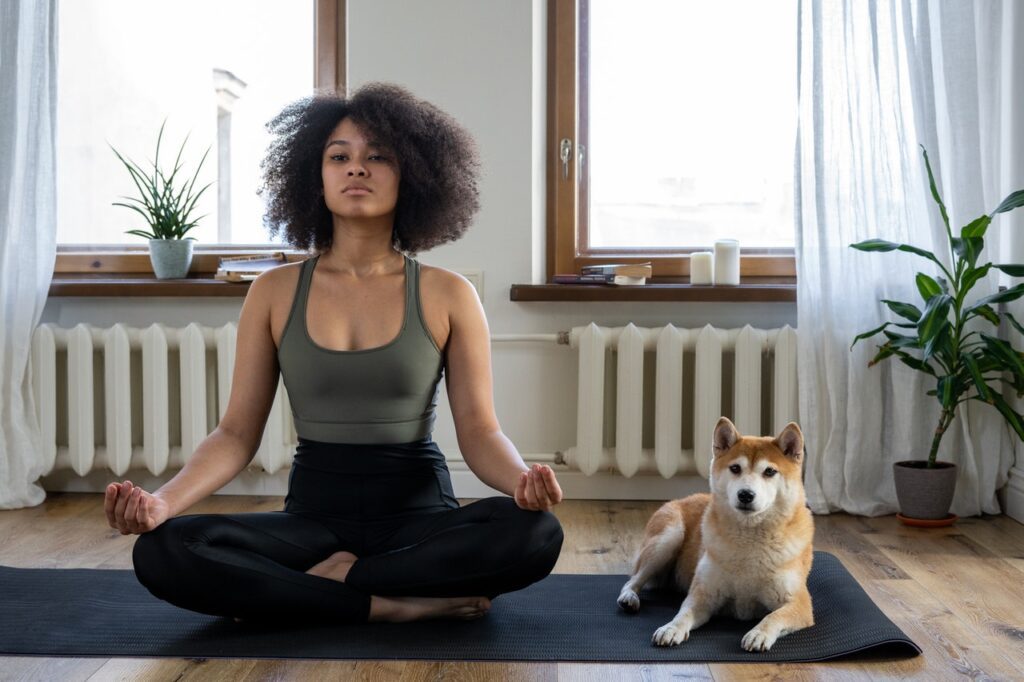You’ve had a stressful day at the office, and you’re looking forward to going home and relaxing and getting a good night’s sleep.
Stress takes its toll.
On your way home, you get stuck in rush hour traffic on the highway, and you discover you’re barely breathing. You’re holding your breath as a reaction to stress and aren’t even aware of it. As you plod along at a snail’s pace trying to make your way through endless traffic gridlock and a sea of red tail lights flashing, you feel your stress level and blood pressure rising. Once you’re finally home, you try to unwind from the day by turning on the TV.
You watch the news hoping for a ray of sunlight when instead, you get flooded with every negative thing that happened that day and week. When trying to sleep, you’re lying awake, counting the tiles on your ceiling rather than counting sheep. Sound familiar? Welcome to life in the “fast lane” that is our current society!
How does stress affect our body?
To get a better understanding of how stress affects our bodies, there are physiological changes that occur internally when we’re dealing with stressful situations in our daily lives. The brain reacts to stressors by stimulating the Hypothalamus, or command center of the brain.
The Hypothalamus sends signals to activate the sympathetic nervous system, one component of the nervous system that prepares the body to respond to imminent danger or threats through the “fight or flight” response.
The adrenal glands release epinephrine, or adrenaline, and cortisol, more commonly known as “stress hormones.” These powerful hormones cause the heart to beat faster, breathing increases, blood pressure rises, senses become sharper, and blood sugar increases and supplies our bodies with energy to handle a stressful situation.
Once the Hypothalamus senses the danger has passed, it sends signals to activate the parasympathetic nervous system that acts as a brake to slow and calm down our bodies.
Usually, the body returns to normal functions, yet over time, if the person is unable to deal with stressors, the stress hormones are constantly circulating throughout our bodies. This can lead to physical and mental health problems such as anxiety, depression, obesity, diabetes, high blood pressure, and a host of other chronic health conditions.
The role of exercise in stress reduction
The question then becomes: How can we help our bodies and minds handle stress more efficiently to maintain health, wellness, and wellbeing? Exercise is one effective method we can utilize to counter the effects of chronic stress. Yoga, Tai Chi, and Qi Gong are a few examples of exercise that offers smooth movements and deep breathing for the whole body, and calms and relaxes the body and mind.
Deep breathing is an especially important technique to reduce stress, anxiety, and depression, as it sends messages to the brain to calm down and relax. The brain sends these messages to soothe and relax the whole body.
Yogic Breathing techniques in action
As a steady yoga practitioner and teacher for over 20 years, I have found that combining restorative yoga poses such as Child’s Pose and Devotional with breathing and meditation techniques are effective stress reducers for my students and their teacher.
Throughout my teaching years, I was surprised when several of my students informed me they had no idea how to breathe deep. I then realized our fast-paced society demands us to move at warp speed, and this increases our stress and decreases our breathing capability. I have learned through my personal practice that the following breathing practices are especially therapeutic in dealing with stress, anxiety, and depression. They are also effective ways to learn how to breathe deeply:
Pursed Lip Breathing –
Inhale through your nose, and exhale through your mouth by pursing your lips as though you are puckering your lips. Breathe out slowly with force through the resistance of your pursed lips. I have also taught this technique when working as a nurse in hospitals to asthma patients, as this helps improve lung function and capacity by exhaling against resistance.
Tension Release –
Sit in a comfortable seated position on the floor or on your bed. Place your hands next to your hips with your fingertips, touching the floor or bed. Inhale, preferably through your nose, and momentarily hold your breath while you silently repeat the following words (mantra): “I deeply wish to release all tension.” Exhale through your mouth and feel all tension releasing through your fingertips away from your body. Repeat until feeling more relaxed.
Abdominal (or Belly) Breathing –
We are normally chest breathers, and this increases stress because we are breathing shallowly and rapidly, and we aren’t fully oxygenating our lungs and bodies. When we utilize Belly Breathing, we are actually working with the breathing muscle (aka: diaphragm) and are more efficiently enabling oxygen to be circulated throughout our lungs and bodies. The best way to learn this technique is to lie down on a comfortable surface (i.e., bed or couch).
Place your hands over your belly and on the inhale, feel the belly expand, and notice your fingertips slightly separate. On the exhale, feel the belly contract, and notice your fingertips will come back together. Breathe as most comfortable for you.
These are but a few breathing techniques that will effectively decrease stress, anxiety, and depression. My hope is that through consistent practice, you will breathe your way back to stress-free health, happiness, and harmony.



